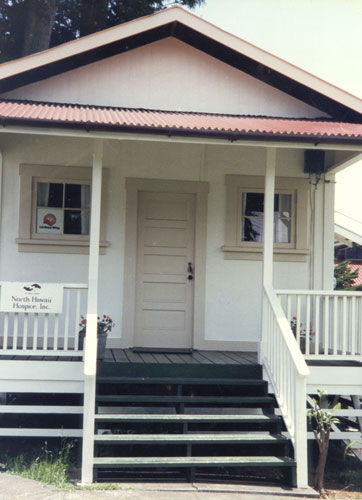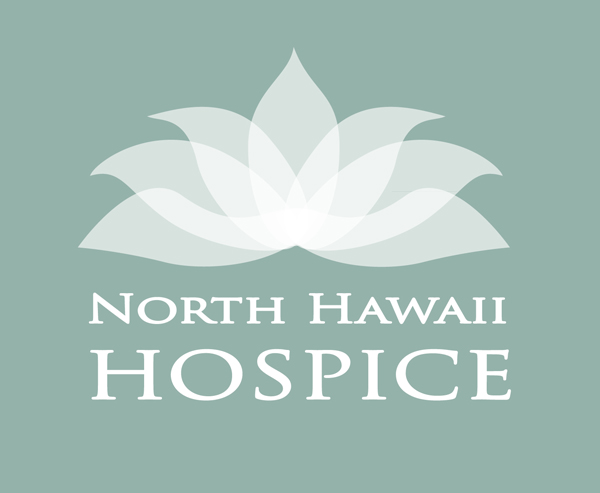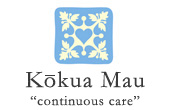
With the support of many dedicated people, North Hawaii Hospice was established in 1986 to serve terminally ill patients and their families in North and South Kohala and the Hamakua District.
Based on a national model of home care, NHH applied for and was granted a Certificate of Need through the State Health Planning and Development Agency. In 1992, NHH became Medicare certified, an important step in expanding our services.
During a successful capital campaign in 2001-2002, the community demonstrated its continued interest in helping NHH become a permanent part of the continuum of care in North Hawaii. Gratefully, NHH was able to purchase and refurbished a quaint office in the heart of Waimea.
Rooted in History and Culture
The modern term “hospice” is derived from the Latin word “hospitium,” meaning “guesthouse.” This term reflects the original establishment of European hospices in the Middle Ages as shelters for weary religious pilgrims traveling to shrines often in hope of finding cures for their various illnesses. The philosophy of hospice has found expression in societies throughout history. Before the rise of modern medicine, family members and religious or spiritual organizations cared for the dying at home and helped surviving loved ones cope with bereavement. Today, people of different cultures strive to bring meaning and solace to this delicate time at the end of life.
The Development of Today’s Hospice

It was not until the 1800s that the term “hospice” was applied to care homes designed solely for the dying. With great advances in medicine, the act of dying became viewed as an increasingly biomedical event rather than a spiritual, emotional, and physical journey made with loved ones. The development of “hospice” as we know it today was a direct response to this trend:
- In Ireland and England, the Irish Sisters of Charity responded to the special needs of the dying by opening the first modern hospices in the early 1900s.
- By the mid-1900s, interest in the psychological and social aspects of dying increased among healthcare providers and social activists.
- In 1967, Doctor Cicely Saunders, a physician trained as a nurse and a social worker at St. Joseph’s Hospice in East London, opened St. Christopher’s Hospice in London. At St. Christopher’s, Dr. Saunders promoted the use of opioid analgesics to control physical pain and the need to care for the social, spiritual, and psychological suffering of patients and their loved ones.
- Over the course of the next ten years, hospices and palliative care programs flourished throughout Great Britain.
Growth of Hospice in the United States

- In the United States, the New Haven Hospice (now Connecticut Hospice) began hospice home care in 1974.
- The opening of the New Haven Hospice started a grassroots movement of hospice home care throughout the country.
- By 1982, Congress voted to support a uniquely American approach to end-of-life care by establishing the Medicare Hospice Benefit. By creating a government funding mechanism for this interdisciplinary approach to caring for the dying, Congress responded to the wishes of the majority of Americans to die at home.
Latest Trends and Developments in Hospice in the United States:
- As compared to the 1,000 hospice admissions in the United States in 1975, 1.6 to 1.7 million Americans received hospice care in 2014.
- Although hospice originally served primarily cancer patients, today hospice assists individuals with an array of life-limiting illnesses, including end-stage heart, lung, kidney, and liver diseases, and conditions of old age such as debility and dementia.
- With Medicare and other health insurances covering a wide-range of services, hospices continue to offer more and more sophisticated medications and comfort care services.
- In 2007, 59 percent hospice care provided nationwide consisted of care given in the patient’s home and 32 percent received hospice services in a hospice inpatient facility leaving only 9 percent of patients that died in an acute care hospital.
- In 2014, the National Hospice and Palliative Care Organization estimated there were 6,100 community-based hospice programs nationwide.
- Overall, since the mid-1970s, more than 10 million terminally ill have died with a hospice’s help.



